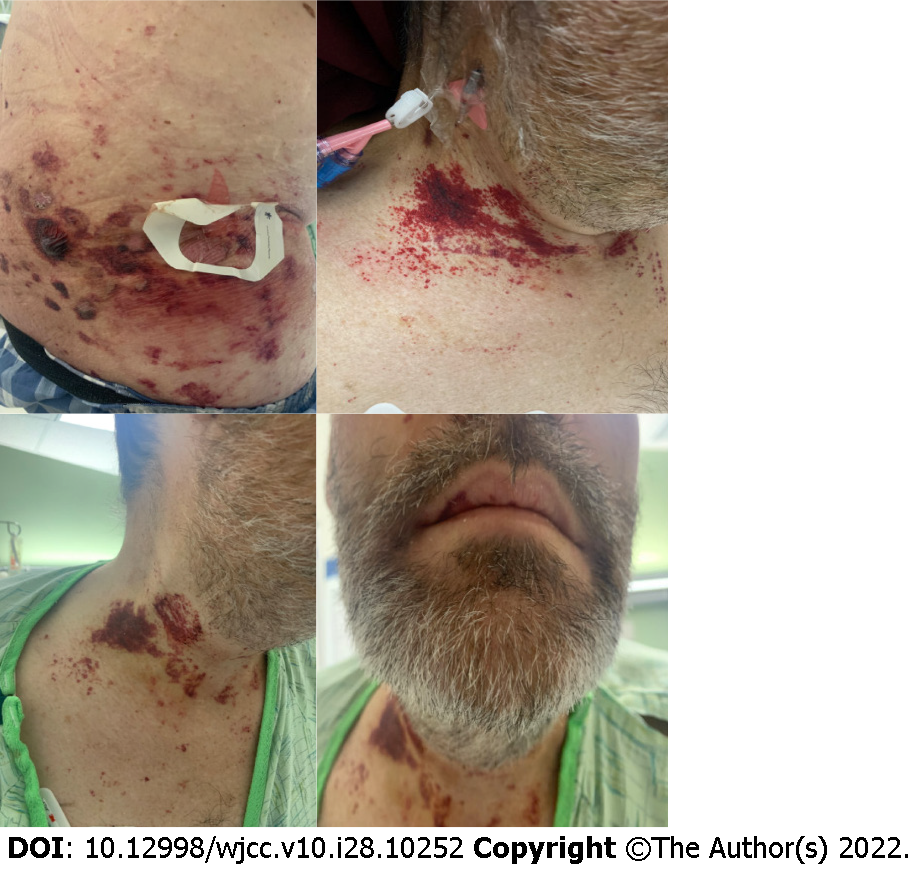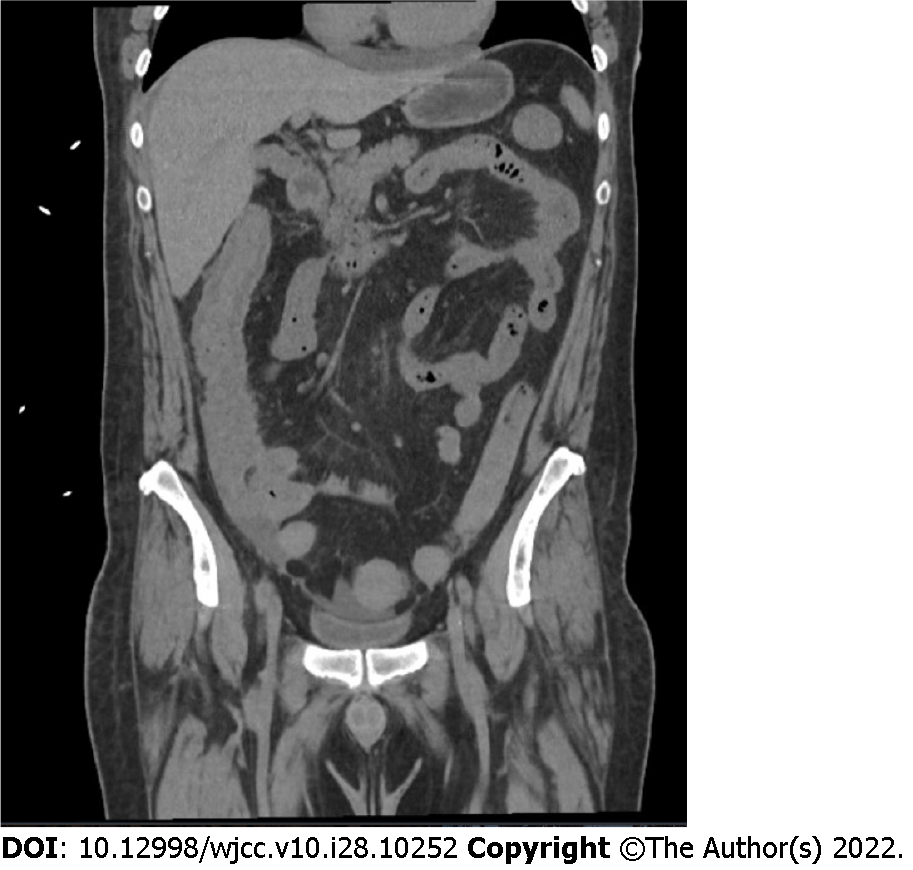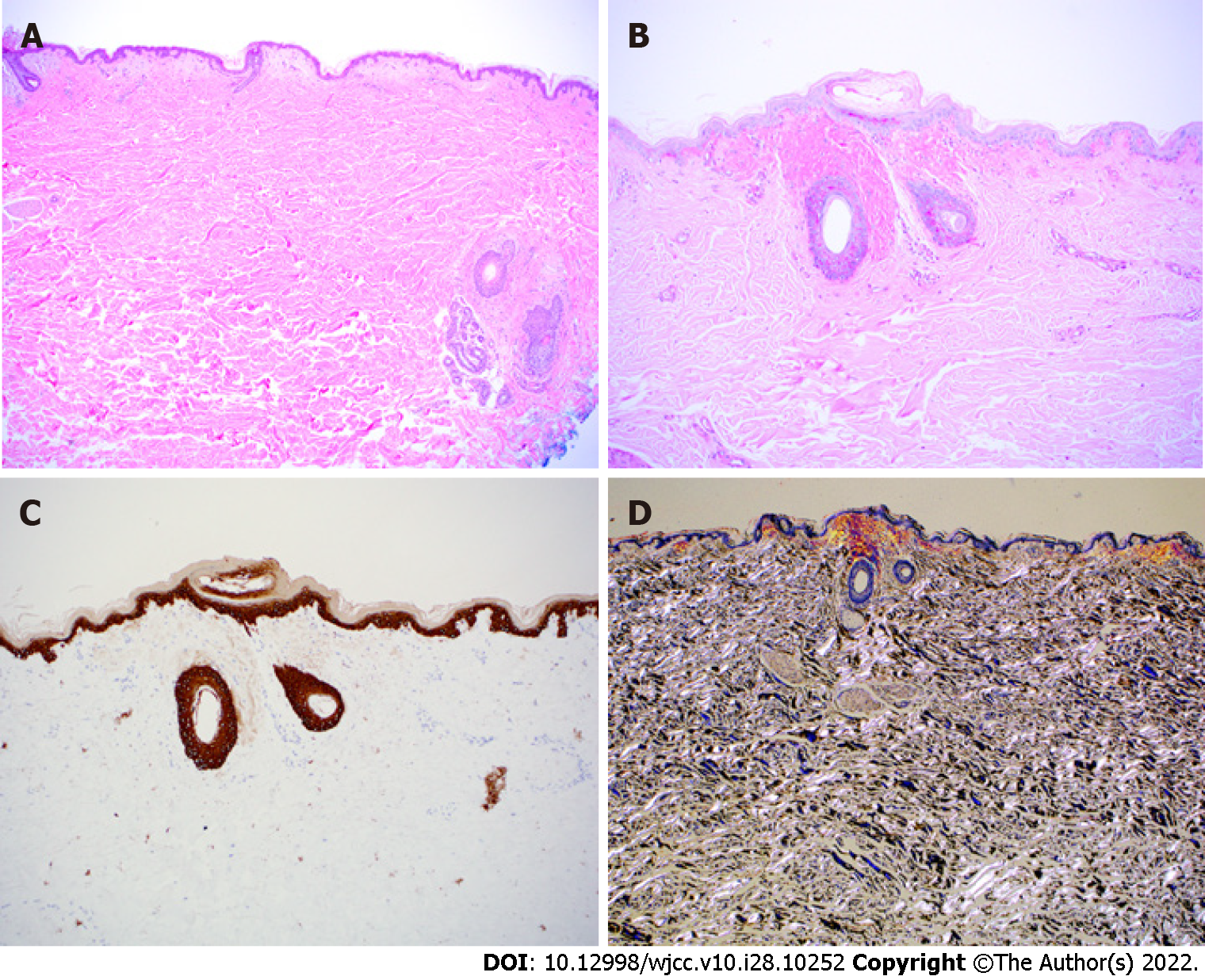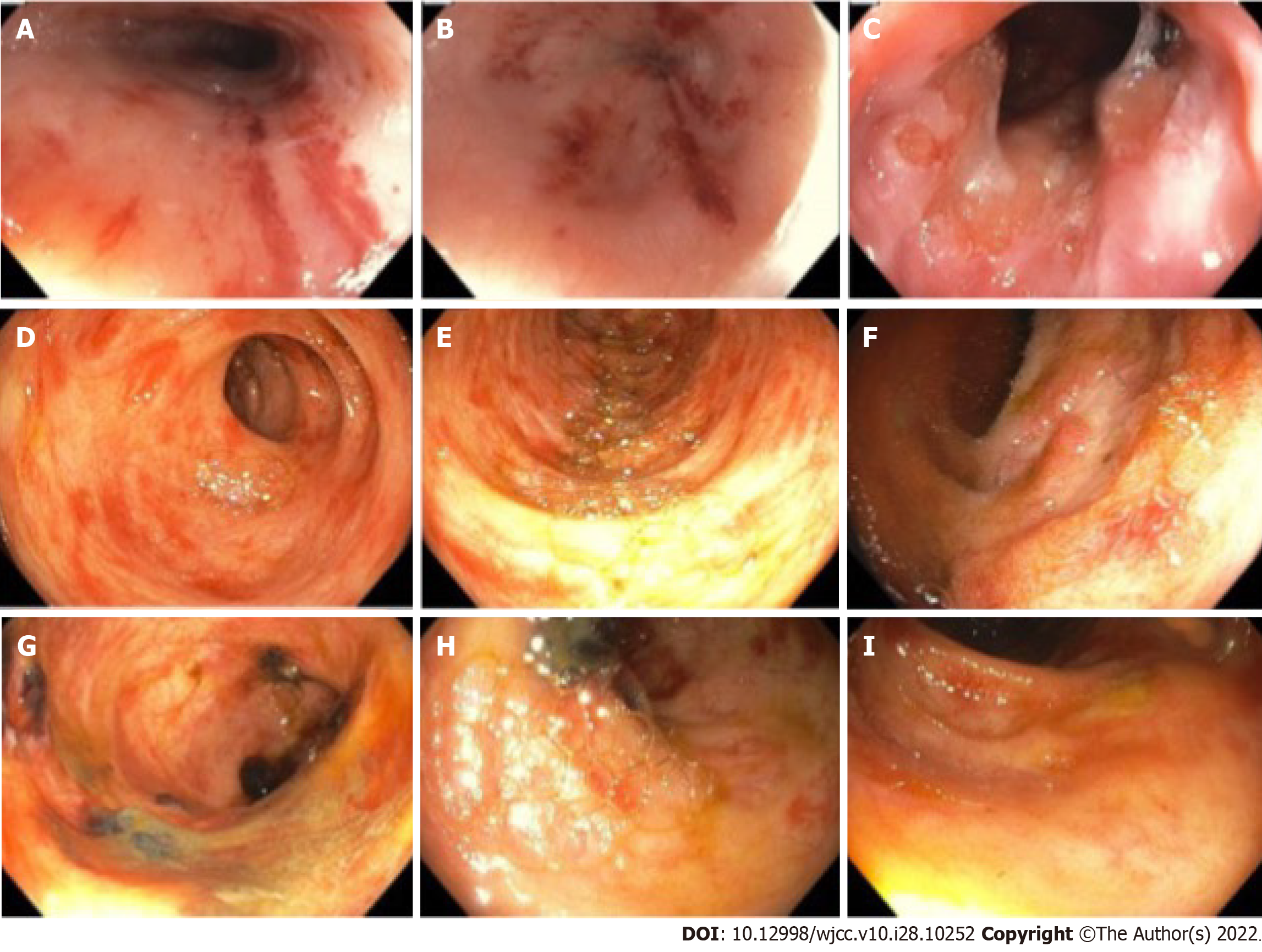Copyright
©The Author(s) 2022.
World J Clin Cases. Oct 6, 2022; 10(28): 10252-10259
Published online Oct 6, 2022. doi: 10.12998/wjcc.v10.i28.10252
Published online Oct 6, 2022. doi: 10.12998/wjcc.v10.i28.10252
Figure 1
Petechial rash on patient’s abdomen, neck, and face, most prominent in areas of friction.
Figure 2
Computed tomography abdomen and pelvis with intravenous contrast with moderate wall thickening of the small bowel loops and colon extending from the cecum to the transverse colon.
Figure 3 Histopathology of abdominal fat pad biopsy.
A: H&E stain at 4 × of skin biopsy with eosinophilic deposits in the upper papillary dermis and periadnexal dermis; B: Periodic Acid-Schiff stain at 10 × shows the deposition to be negative for lipoid proteinosis; C: Cytokeratin 5/6 immunostain at 10 × is blush positive but interpreted as negative, an important stain considering differential includes primary cutaneous amyloidosis of macular or lichen subtype; D: Congo red stain at 4 × under polarization showing apple green birefringence, rarely seen in cutaneous amyloidosis but always present in amyloid light amyloidosis.
Figure 4 Esophagogastroduodenoscopy and colonoscopy images.
A-C: Esophagogastroduodenoscopy shows petechial lesions and friable mucosa scattered throughout distal esophagus to duodenum; D-I: Colonoscopy images show petechial lesions and shallow ulcers in colon.
Figure 5 Histopathology from colon biopsy.
A: H&E stain at 4 × of colon biopsy shows fragments of colonic mucosa with amorphous homogenized pink material; B: Congo red stained colon tissue at 4 × shows the classic salmon-color; C: Congo red stain colon tissue at 4 × under polarization shows apple green birefringence.
- Citation: Bilton SE, Shah N, Dougherty D, Simpson S, Holliday A, Sahebjam F, Grider DJ. Persistent diarrhea with petechial rash - unusual pattern of light chain amyloidosis deposition on skin and gastrointestinal biopsies: A case report. World J Clin Cases 2022; 10(28): 10252-10259
- URL: https://www.wjgnet.com/2307-8960/full/v10/i28/10252.htm
- DOI: https://dx.doi.org/10.12998/wjcc.v10.i28.10252

















